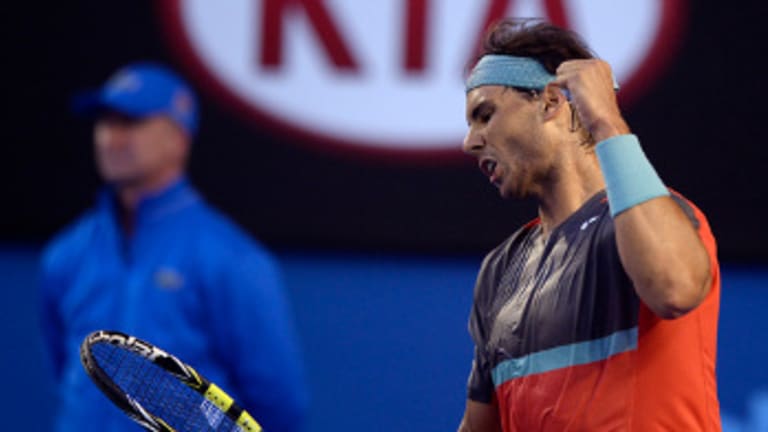The debate over Rafael Nadal’s fitness in the Australian Open has raged on in some places despite the two-pronged futility of the discussion. First of all, I’m not aware of anyone who has said with any credibility or precision just how much pain Nadal felt, and what he did or didn’t do to alleviate it from the start. Second, nothing is going to change the fact that Stanislas Wawrinka rode the crest of a magnificent first-set performance and won his first Grand Slam title last Sunday, while Nadal was denied the opportunity to book his 14th—a feat that would have tied him in the title count with Pete Sampras.
The first of those realities is particularly interesting to me because of how that critical first set of the final played out. Let’s face it, had Nadal won that set, Wawrinka’s win (assuming he would have ultimately prevailed over his badly injured opponent) could much more easily be described as tainted. The fact that Wawrinka played such an outstanding set helps dispel the theory embraced by too many Nadal fans—that were Rafa not injured, he would have won the match.
I’m doubly confident that Wawrinka might have won that match in any event because that first set featured one game that ranks as one of the most unexpected and extraordinary things I’ve seen in tennis. That was the final game of what turned out to be a 6-3 set for Wawrinka.
I’d like to know just how fit Nadal was in that critical game, because it was not only the most un-Nadal-eseque game I’ve ever witnessed, but because it could also go down as the moment when Rafa first showed what I’ve always described as “champion’s fatigue.” That’s the condition that afflicts great players at that stage in their careers when they suddenly fail to muster the requisite will, skill, and/or nerve to sustain excellence, or to survive desperate straits.
Another way to describe it is that tennis players often experience a moment when they “jump the shark” in their careers—e.g. Roger Federer’s failure to convert two match points in his U.S. Open semifinal battle with Novak Djokovic in 2010. It’s silly to try to be too precise about this, but like any tide, there’s a high point followed by an inevitable if not always dramatic ebb. In any event, the game had to be remarkable to anyone who’s followed Nadal’s career.
It went like this: Wawrinka broke Nadal with relative ease at 15-40 in the fourth game to assume a 3-1 lead. After a routine hold in which Wawrinka smacked two aces, Nadal fought off a break point with a service winner targeting Wawrinka’s backhand to stay within reach at 2-4. Wawrinka then recorded his 33rd consecutive hold game to go up 5-2, and Nadal answered with a strong hold for 3-5.
Wawrinka found himself serving for the set, and tasked with checking the fit of his big-boy pants. He didn’t fare so well. He clocked a prodigious forehand shank—a tribute, perhaps, to his pal Federer, who must have been perched on the edge of his couch. Then Nadal drilled a forehand winner down the line. Next, a brief rally ended with a monster of an inside-out forehand winner by Nadal. 0-40.
Legions of Nadal fans must have breathed an enormous sigh of relief at that moment, for here there man was with three break points in hand. I’m not sure anyone could imagine Nadal missing that chance to break, especially given the fact that Wawrinka hadn’t, and wouldn’t, put a first serve into play in the entire game. And even if someone could envision Nadal blowing that game, he certainly couldn’t have predicted how it would happen.
